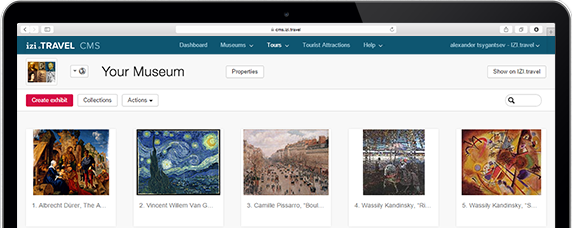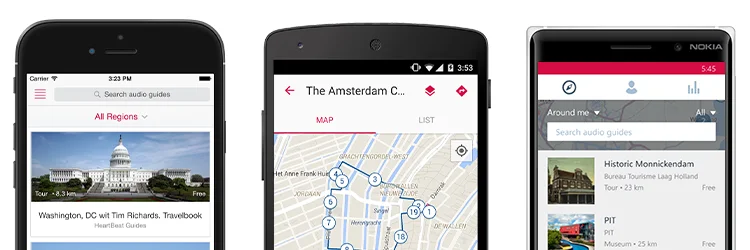Tur audio Niccioleta, a Twentieth Century Mining Village
2 sights
- Sumar tur audio
-
Sumar tur audio
Update Required To play the media you will need to either update your browser to a recent version or update your Flash plugin.The original nucleus of Niccioleta was built in the mid-1930s by the Società Montecatini (Montecatini Company), which had discovered an important pyrite deposit in the area. The village takes its name from a rural settlement slightly to the north, from that time on called ‘Niccioleta Vecchia’ (‘Old Niccioleta’) and partially abandoned today. From an architectural point of view, Niccioleta is an example of Rationalism, a widespread style during the Fascist epoch, and it has the characteristics of a workers’ settlement of the period, with the houses for the miners, the other workers, and the company management close to the mine, and subdivided into zones according to social class. The director lived in a villa with a garden, on a small hilltop which dominated the habitations of the workers, constructed in the lower part of the village. Near the director’s villa were the houses of the vice-director, the doctor, the technicians, and the office staff, while those of the supervisors, or foremen, also called ‘caporals’, were located at the entrance of the village. The unmarried miners, together with those waiting for the arrival of their families, occupied the so-called ‘camerotti’ (‘large rooms’), long and low lodges with about forty cots, built at the edge of the village. From its origins, Niccioleta saw an influx of workers and technicians with their families from all of Italy, especially from the area of Monte Amiata. A lively and united community was created, but in June of 1944 it was devastated by a ferocious Nazi-Fascist massacre, with the slaughter of 83 miners. It was a heavy blow for the village, and more than forty families returned to their places of origin. With the end of the war, between spring and summer 1945 the mine resumed its production, thanks also to new arrivals. With the passing of the years the inhabitants of Niccioleta - which in 1976 became a district of the Municipality of Massa Marittima - once more consolidated their strong sense of community and solidarity. Then, with the crisis of the mining sector, the mine gradually reduced its activity, until its closure in 1992, causing a drop in population and leaving the village with an uncertain future, in profound need of re-building.
The visit to the village includes stops at 12 points of interest, whose descriptions are taken from the volume Niccioleta: fotografie e immagini di una comunità mineraria (Niccioleta: photographs and images of a mining community), edited by Riccardo Zipoli (published by Biblioteca Gaetano Badii, Massa Marittima, 2022).
- 1 The Company Pantry and the ‘camerotti’ (‘large rooms’)
- 2 Il Dopolavoro aziendale (The Workers’ Club)
- 3 Piazza 13 Giugno (13th June Square): the heart of the village
- 4 The two big residential blocks for the workers
- 5 The church and the cinema
- 6 The new nursery school, the COOP, and the branch office of the PCI
- 7 The director’s villa
- 8 The zone for the technicians and office staff
- 9 The pyrite mine of Niccioleta
- 10 The courtyard of the Nazi-Fascist massacre
- 11 The supervisors’ houses and the ‘strada del ferro’ (‘road of iron’)
- 12 Poggio la Madonna and the elementary school
-
Sumar tur audio
Update Required To play the media you will need to either update your browser to a recent version or update your Flash plugin.The original nucleus of Niccioleta was built in the mid-1930s by the Società Montecatini (Montecatini Company), which had discovered an important pyrite deposit in the area. The village takes its name from a rural settlement slightly to the north, from that time on called ‘Niccioleta Vecchia’ (‘Old Niccioleta’) and partially abandoned today. From an architectural point of view, Niccioleta is an example of Rationalism, a widespread style during the Fascist epoch, and it has the characteristics of a workers’ settlement of the period, with the houses for the miners, the other workers, and the company management close to the mine, and subdivided into zones according to social class. The director lived in a villa with a garden, on a small hilltop which dominated the habitations of the workers, constructed in the lower part of the village. Near the director’s villa were the houses of the vice-director, the doctor, the technicians, and the office staff, while those of the supervisors, or foremen, also called ‘caporals’, were located at the entrance of the village. The unmarried miners, together with those waiting for the arrival of their families, occupied the so-called ‘camerotti’ (‘large rooms’), long and low lodges with about forty cots, built at the edge of the village. From its origins, Niccioleta saw an influx of workers and technicians with their families from all of Italy, especially from the area of Monte Amiata. A lively and united community was created, but in June of 1944 it was devastated by a ferocious Nazi-Fascist massacre, with the slaughter of 83 miners. It was a heavy blow for the village, and more than forty families returned to their places of origin. With the end of the war, between spring and summer 1945 the mine resumed its production, thanks also to new arrivals. With the passing of the years the inhabitants of Niccioleta - which in 1976 became a district of the Municipality of Massa Marittima - once more consolidated their strong sense of community and solidarity. Then, with the crisis of the mining sector, the mine gradually reduced its activity, until its closure in 1992, causing a drop in population and leaving the village with an uncertain future, in profound need of re-building.
The visit to the village includes stops at 12 points of interest, whose descriptions are taken from the volume Niccioleta: fotografie e immagini di una comunità mineraria (Niccioleta: photographs and images of a mining community), edited by Riccardo Zipoli (published by Biblioteca Gaetano Badii, Massa Marittima, 2022).
Recenzii
2 recenzii
Scrieți o recenzie despre acest tur-
07-10-2025
Gran bel lavoro. Grazie a chi la fatto
-
05-18-2024
Very well done.
Descărcați aplicația gratuită izi.TRAVEL
Creați-vă propriile tururi audio!
Folosirea sistemului şi a aplicaţiei ghid mobile este gratuită


